Jessi and I were heaving deep sighs over our post-election coffee on Wednesday morning. Neither of us were happy about the election results: a president-elect that (among other things) denies the science of climate change and endorses misogyny. How is a woman in science supposed to feel after an election like this? I think the answer is “fired up.”
Highly educated women in science make up a minority of the electorate. How much of a minority? Earlier this week, the New York Times published a map of voter turnout (from 2012) by American education demographics, broken down by race and county. The map looks mostly blue: meaning mostly whites with little to no college education. It’s not only highly educated women that appear to be a minority here, but highly educated any-gender people that appear to be a minority.
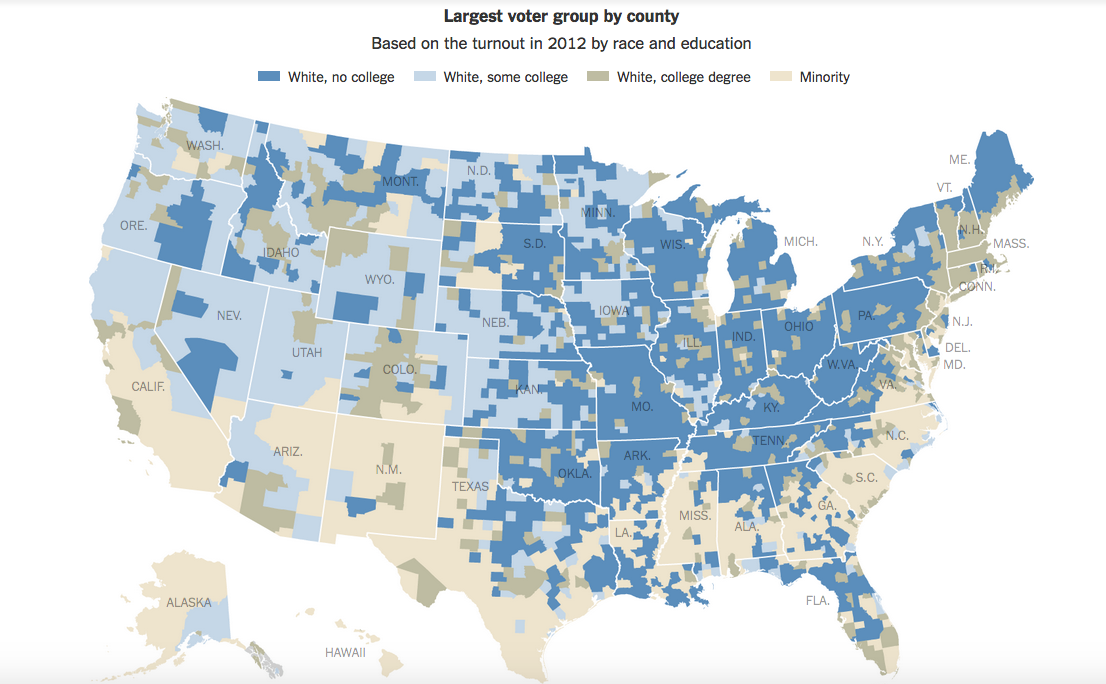
Looking at the map, no one would want to run an election campaign relying on a college-educated demographic. College education looks rare in the United States, dark tan appears as a small minority of geographic voting groups. However, college education is not really that rare. Roughly 65 percent of people over 25 in the U.S. have had some college, but this majority becomes hidden on maps like the one above when the 65 percent clusters geographically, mostly in and around urban centers.
How does education influence election outcomes? I ran the question by Jessi and she agreed it would be interesting if I over-layed the map of the education demographics by county with the election results by county. This is the map of the election results by county, also from the NYT.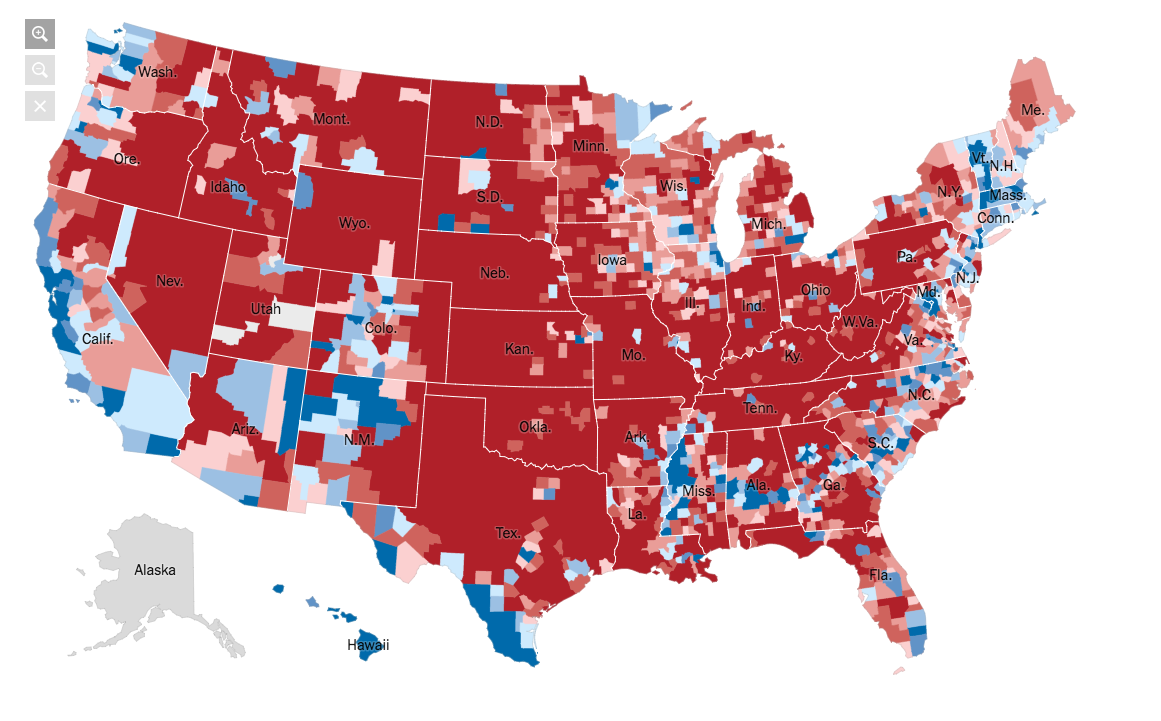
Overlaying the election results map with the education voter demographics map, looks something like this:
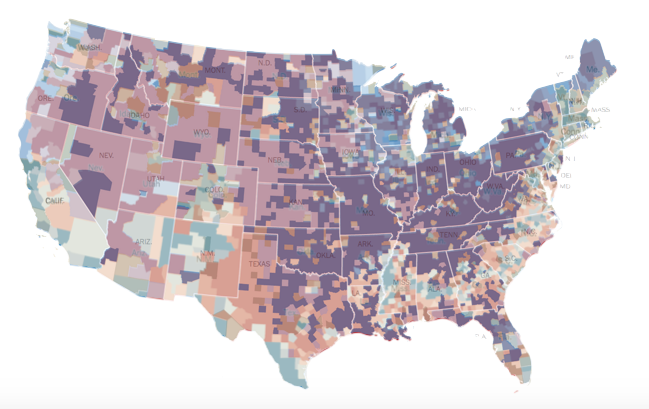
The overlay map looks very pink and purple. Lots of white people with some or no college education voted for Trump.
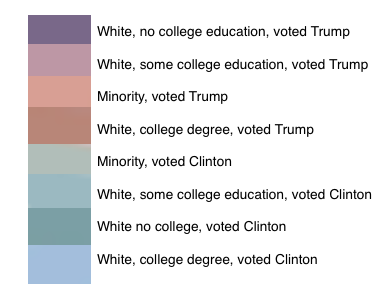
I think the map hints at a greater problem though, the clustering of people with similar backgrounds, education levels and ideology. This makes us diverse-phobic. When we are used to seeing people like us, we don’t know how to interact with people not like us.
I am guilty of this. I am scared of talking to people that don’t think like me. A real life example: a few weeks ago (before the election) I saw a flyer at Saint’s. 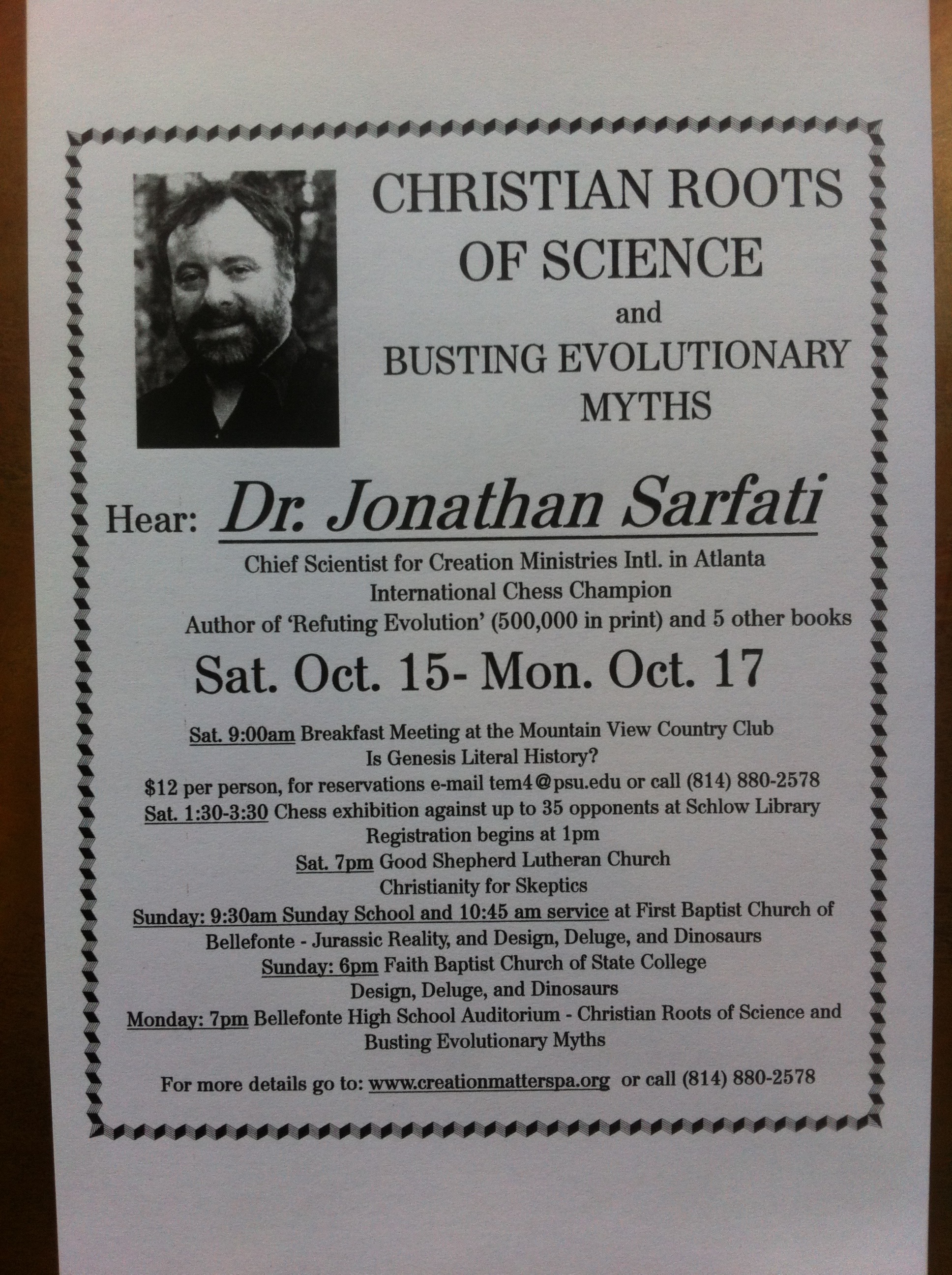
I was upset. Here’s a flyer for events to tell people why evolution is a myth. AND where are the events being held!!?!! A public high school. A public library. Places that are supposed to endorse facts and science and progressive education. Hosting a creationist!! I vented to friends at the coffee shop. I got really angry. I turned the flyers upside down so I wouldn’t have to look at them. But did I do anything? Did I go anywhere where I might have to listen to a crazy creationist and hear what they have to say? Nope. No way. I didn’t even want to imagine sitting in the room and having to listen to what they had to say. Not for a second.
And that is what I think the problem is. As we get divided on issues, like evolution, like climate science, like the fifty other things the Trump platform stands against, we have a tendency to treat disagreement with ignorance. I talk to people that also study evolution, that also work similar jobs, that also believe in the things I already believe in. I ignore the things I don’t want to hear. I stay in my comfortable echo-chamber. How do we make change? By voicing our opinions to people that might not agree with us, by listening to the “other side” so we know where their opinion comes from, by doing what’s difficult instead of what’s easy.
I feel guilty about not going to the “Busting Myths” events and voicing an alternative opinion. Was that my obligation as a scientist? Is it all of our obligation to speak up now? Or do we continue business as usual…
